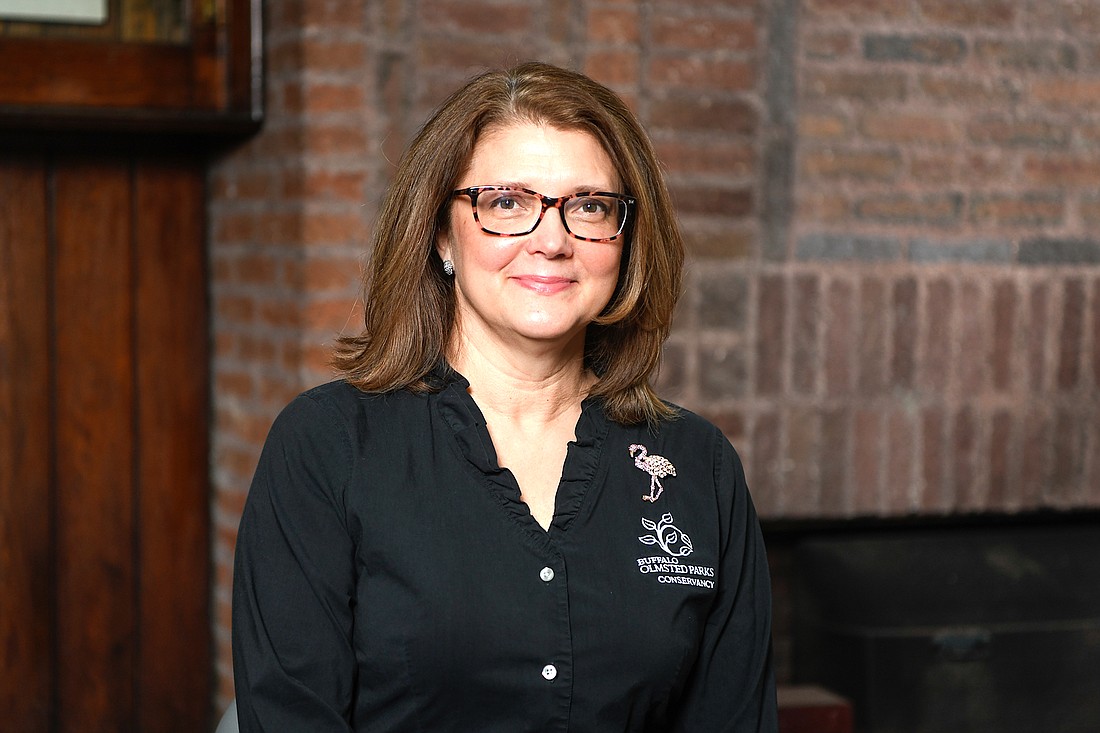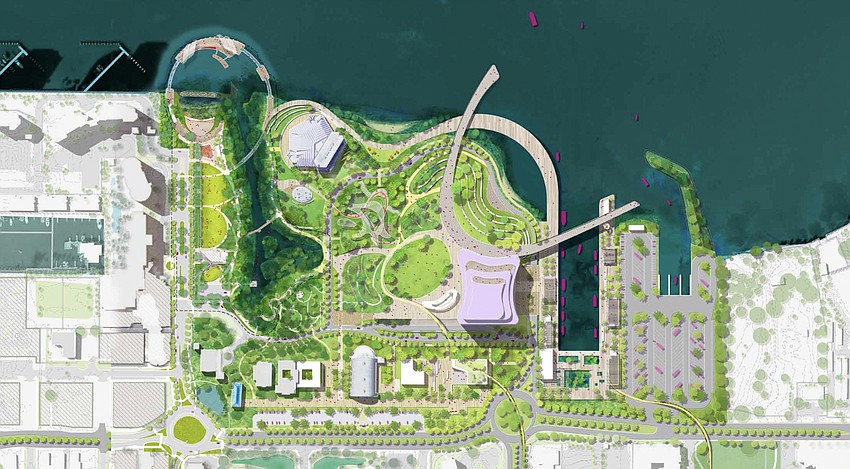- May 21, 2024
-
-
Loading

Loading

When she arrives in Sarasota in May to assume her role as the first full-time president and CEO of the Bay Park Conservancy, Stephanie Crockatt will bring with her a rare skill set of landscape architecture, fundraising and operating a nonprofit park conservancy.
She started with designing irrigation systems for golf courses. Then Crockatt became tournament co-director for the Oldsmobile Classic LPGA event, parlaying that experience to the LPGA Tournament Owners Association, where she was president and executive director for nearly eight years. After another seven years of leading fundraising and awareness building at University of Georgia, she joined the Buffalo Olmsted Parks Conservancy in 2014. Within months, she ascended to the executive director position there.
Following the announcement of her new role in Sarasota, Crockatt spoke to the Observer about the progress so far of developing the conservancy, its primary mission of building The Bay, and how she plans to build the organization for long-term sustainability.
My career started with golf as being my green-space forté. I was going to be a famous golf-course designer and wound up working with a professional golf tournament for a number of years. That was my introduction to nonprofit work. It was a charitable nonprofit that ran the (LPGA) tournament, and that was very eye-opening. And from that tournament, because of the title sponsor at that time (Oldsmobile), which was also the owner of the tournament, was a member of an association of many other owners and title sponsors and I was recruited to lead the nonprofit that was basically the chamber of commerce of all of those title sponsors.
I was spending a lot of time on the road. When my 5-year-old daughter threw a fit once because I told her that we had to go downstairs to eat at the breakfast buffet and she’s said, “We need room service!,” I knew that the road was getting weary.

So I decided to do what I was doing at all of the tournaments, which was fundraising, and that's when I went to the University of Georgia and did that for about seven years. It taught me all about just the relationships of fundraising, Then, once I felt like I really had accomplished that, it just seemed like a natural fit to try to go back into the nonprofit world and apply that there.
I truly wasn't expecting when I went back into the nonprofit world to do fundraising that I would be given the position of executive director again right away. Within five months there was a change here in leadership, and they asked me to take over, so I've been doing that for almost nine years.
This is an opportunity of a lifetime to enhance my career. I get to move closer to my kids, which is a super bonus. I’ve been able to work with people like AG Lafley and the people I've met on the board and I'm blown away.
My son just moved about a year ago to Tarpon Springs and he told me I’ve got to see this place. I have friends who live in Dunedin. I have friends who live in Naples, but I really didn't know people in Sarasota. The day it was announced so many people started getting a hold of me saying they’ve got a place there. We're going to have coffee on St. Armands. There's just so much enthusiasm. People are really sincerely excited about this, even in Buffalo. It’s all been extremely positive.
Where I'm at now I'm taking care of six major parks, and each one of them has a different personality, and the park in Sarasota definitely has its own personality. It is incredibly conservation based, but also public access based, inclusivity and connectivity. I've been schooled in the Olmsted principles of design and the social inclusion and democracy of space and I think that this park has taken on a lot of those principles.
They did a really outstanding playground that doesn't look like a playground. It's just so innovative and fresh. They want to get people connected to the water. They want to bring new vendors and business opportunities to help with the park, and the fact that it's dotted with these other cultural institutions is very interesting.
This park is just very dynamic. When I was down there being interviewed, there was a salsa class going on at night. Everything about it is just very friendly. I have to tell you, Sarasota is one of the cleanest cities I have seen in a long time.
Every conservancy is birthed through a friends group or some type of grassroots initiative. And this group, led by AG and their board and all who’ve been involved are incredibly savvy. They are a bunch of professional volunteers who have an incredible passion for parks. You can tell that it oozes from them and gives you a lot of confidence when you talk to them about this initiative. They have done an absolutely outstanding job in getting this initiative off the ground, to put together a 501(c)(3) is outstanding for what the small group has done and bringing in a professional landscape architect and project manager like Bill Waddill, who is overseeing the capital side of this, is just knocking it out of the park.
My contract here has a 60-day notice clause, and my board does think it's going to take 60 days to get them doing their own search and I need to transition an interim director here, so my last day is May 18. But it could be sooner if stars align. I’m sure I'll have many familiarization visits over long weekends to come down and see warm Sarasota and soak it in.
From a project standpoint, I think things are pretty well in hand. The funding is there, the staff are there, so from a Phase 1 standpoint going into Phase 2 I think they've got the right recipe. What I think I'm going to need to focus on is getting the conservancy as an organization more established. There’s going to be some HR, there's going to be some finance, there's going to be some team-building. I’m going to have to do some assessing. I’m going to be meeting with a lot of folks who have a keen philanthropic interest. So it's going to be getting to know the fabric of all of it.
It's all about sustainability. We can build and build and build, but we want this conservancy to be sustainable, to be there for the long haul to make sure that the investment has a long life. The TIF funding is pretty well established, and it appears as though the numbers are going to come up pretty well ahead of what their initial projections were.

I'm hoping it's kind of like a field of dreams in some ways where you build it and they come. But I do think that there's a very robust private philanthropic community there, and I've heard that there are kind of three buckets of giving that Sarasota. If you take a Venn diagram of all three of those buckets and overlay them, parks are at that intersection. That’s because they are culturally rich and bring people together for great experiences. They are about the environment and conservation and healthy living and wellness. Having access to open, clean, healthy spaces is important to quality of life and our physical and mental health.
Those three buckets are really kind of brought together by parks, and so I'm hoping that through more investigation into private resources that we can see some solid investment to make sure that this has a good, long, sustainable life.